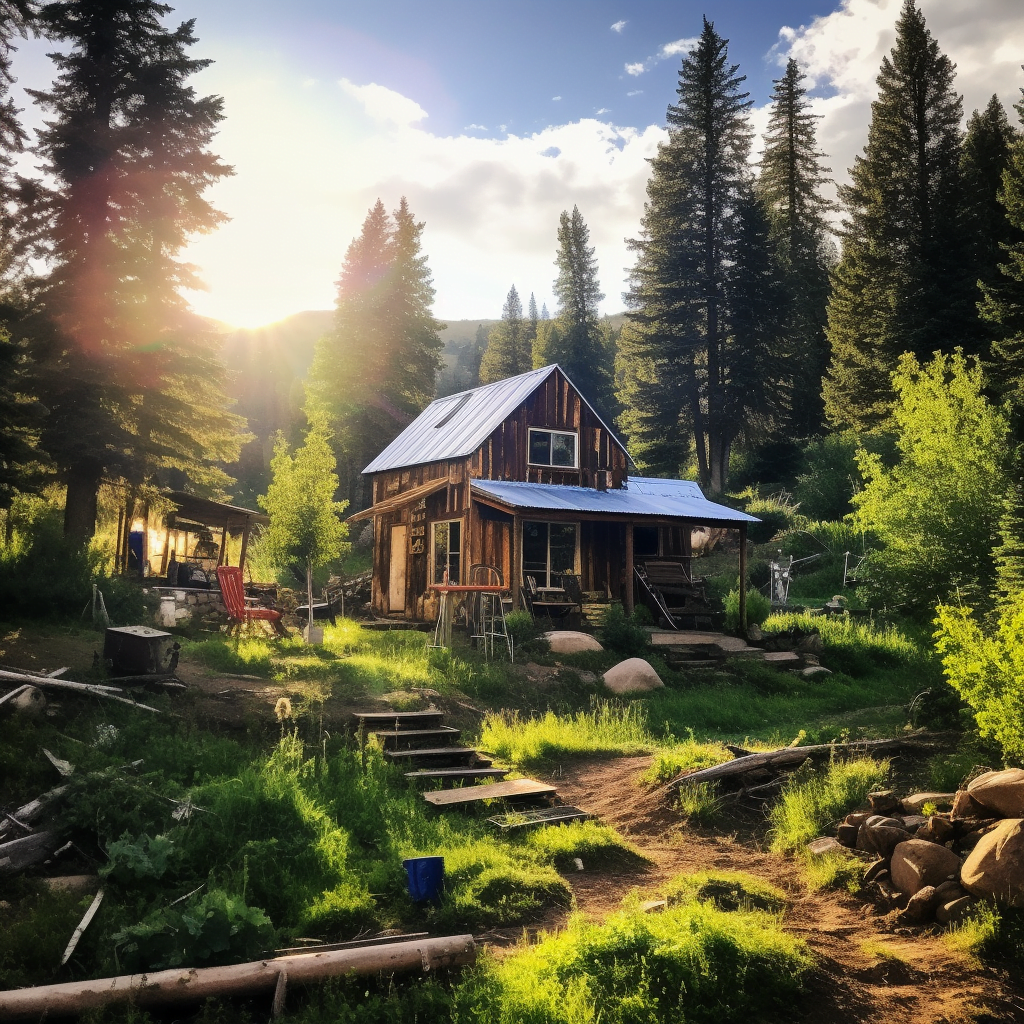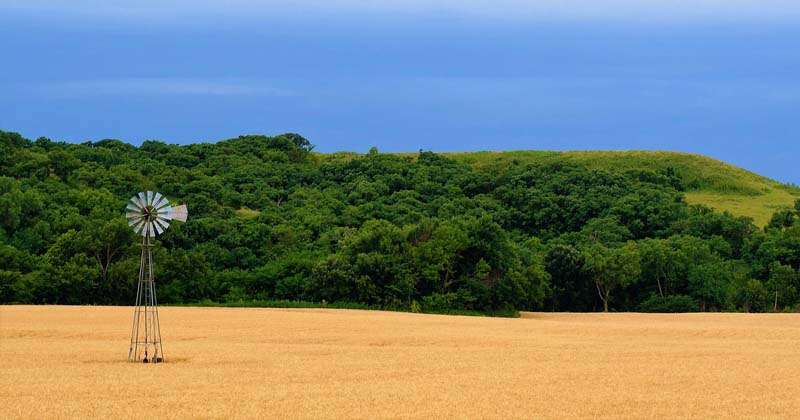If you’ve ever dreamed of starting a homestead but thought it wasn’t possible due to a lack of funds, think again. Starting a homestead with no money may seem like a daunting task, but with time, effort, and a bit of resourcefulness, it can be done. The key is to be patient and take a gradual approach. Look for free land opportunities in states like Kansas and Nebraska, start small and gradually expand your crops and livestock, and develop essential DIY skills to save money. Managing your finances wisely and embracing frugal living are essential steps, as is connecting with and learning from experienced homesteaders. Consider living off the grid to reduce costs, recycle and reuse materials, and once your homestead starts producing excess crops, explore selling them at local farmers markets for some extra income. With determination and resourcefulness, your homesteading dreams can become a reality.
Finding Land

Research free land opportunities
When starting a homestead with no money, one of the first things you can do is research free land opportunities. Some states, such as Kansas and Nebraska, offer free land for homesteading. These programs are often designed to attract residents to rural areas and help stimulate economic growth. By taking advantage of these programs, you can secure a piece of land without spending any money.
Look for homesteading programs
In addition to free land opportunities, there are also homesteading programs that offer affordable land options. These programs may have certain requirements or qualifications that you need to meet, but they can be a great way to establish your homestead without a large upfront investment. Explore local and state programs, as well as national organizations that offer assistance to aspiring homesteaders.
Consider communal living
Another option to consider when looking for land is communal living. This involves joining or creating a community of like-minded individuals who are pursuing a self-sustainable lifestyle. By pooling resources and sharing land, you can reduce individual costs and increase your chances of success. Communal living also provides a support system and opportunities for learning and collaboration.
Utilize online platforms
The internet is a powerful tool for finding land and connecting with other homesteaders. There are websites and online platforms dedicated to helping people find land for homesteading. These platforms allow you to search for available properties, connect with landowners, and learn from experienced homesteaders. Take advantage of the online community to expand your options and gather valuable information.
Starting Small
Start with a small plot of land
When starting a homestead with no money, it’s important to start small. Choose a small plot of land that you can manage with your current resources. This will allow you to focus your time, energy, and limited funds on developing the essentials of your homestead. As you gain experience and resources, you can gradually expand your landholding.
Begin with basic crops and livestock
In the beginning, focus on growing basic crops and raising livestock that are relatively low-cost and low-maintenance. This will ensure that you can provide for yourself and your family while minimizing expenses. Choose crops that are high-yielding and require minimal inputs, such as root vegetables and leafy greens. Consider starting with small livestock, such as chickens or rabbits, which are easier to manage in terms of space and feed.
Expand gradually as you gain experience
As you gain experience and confidence in your homesteading skills, you can gradually expand your operations. This can include expanding your crop variety, increasing the number of livestock, or diversifying your products. By taking a gradual approach, you can ensure that each new addition to your homestead is manageable and sustainable.
Focus on high-yield and low-maintenance crops
To make the most of your limited resources, focus on growing high-yield and low-maintenance crops. High-yield crops will give you more produce per square foot, maximizing your food production. Low-maintenance crops require less time and effort to grow, allowing you to allocate your resources more efficiently. Examples of high-yield and low-maintenance crops include potatoes, tomatoes, beans, and zucchini.
Developing DIY Skills
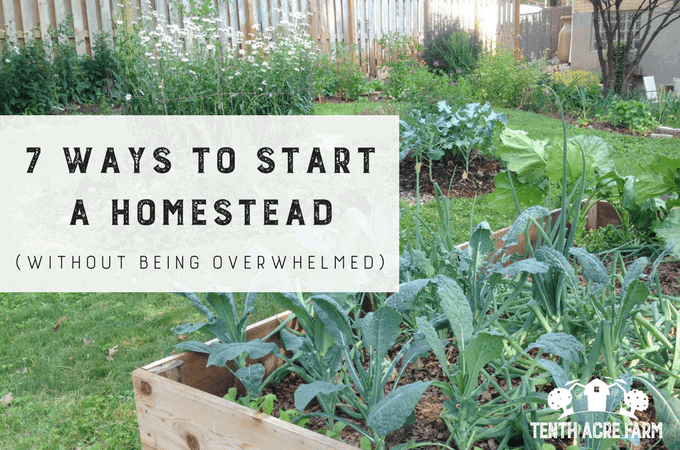
Learn basic carpentry and construction
Developing DIY skills in carpentry and construction can save you a significant amount of money when setting up your homestead. By learning the basics of woodworking, you can build your own structures, such as chicken coops, greenhouses, and raised beds. Basic carpentry skills will also come in handy for repairing and maintaining your homestead infrastructure.
Master gardening and food preservation
Gardening is a fundamental skill for any homesteader. Mastering gardening techniques, such as soil preparation, seed starting, and pest management, will ensure a successful harvest and reduce your reliance on store-bought produce. Additionally, learning food preservation methods, such as canning, pickling, and drying, will allow you to preserve your harvest for year-round consumption.
Take up sewing and mending
Sewing and mending skills are invaluable when living a self-sustainable lifestyle. Being able to repair and alter clothing and other textiles can save you money on buying new items. Learn the basics of sewing, such as hemming, patching, and sewing buttons, to keep your clothing in good condition.
Learn plumbing and electrical work
Having basic plumbing and electrical knowledge can help you maintain and repair your homestead infrastructure. You can learn how to fix leaks, install new pipes, and troubleshoot common plumbing issues. Similarly, understanding the basics of electrical work will allow you to handle simple repairs and installations, ensuring the efficient operation of your homestead.
Managing Finances

Create a detailed budget
Managing your finances is crucial when starting a homestead with no money. Creating a detailed budget will help you track your income and expenses, identify areas where you can cut costs, and plan for future investments. List all your income sources and expenses, including mortgage or rent, food, utilities, and any debts or loans. Regularly review and adjust your budget as needed.
Save money by cutting unnecessary expenses
To make your homestead financially viable, it’s important to cut unnecessary expenses. Identify areas where you can reduce spending, such as dining out, entertainment, and non-essential subscriptions or memberships. Consider adopting a minimalist lifestyle and prioritize spending on essential items that directly support your homesteading goals.
Have a regular source of income
While the ultimate goal of homesteading is self-sustainability, it’s important to have a regular source of income during the initial stages. This can be part-time or remote work, freelancing, or running a small business. Having a consistent income will help cover your basic needs and ensure you have funds for necessary investments in your homestead.
Set aside emergency funds
Building and running a homestead comes with its own set of challenges and unexpected expenses. It’s important to set aside emergency funds to cover any unforeseen circumstances, such as equipment repairs or medical emergencies. Aim to save a portion of your income each month until you have a comfortable emergency fund. Being financially prepared will give you peace of mind and protect your homestead.
Embracing Frugal Living
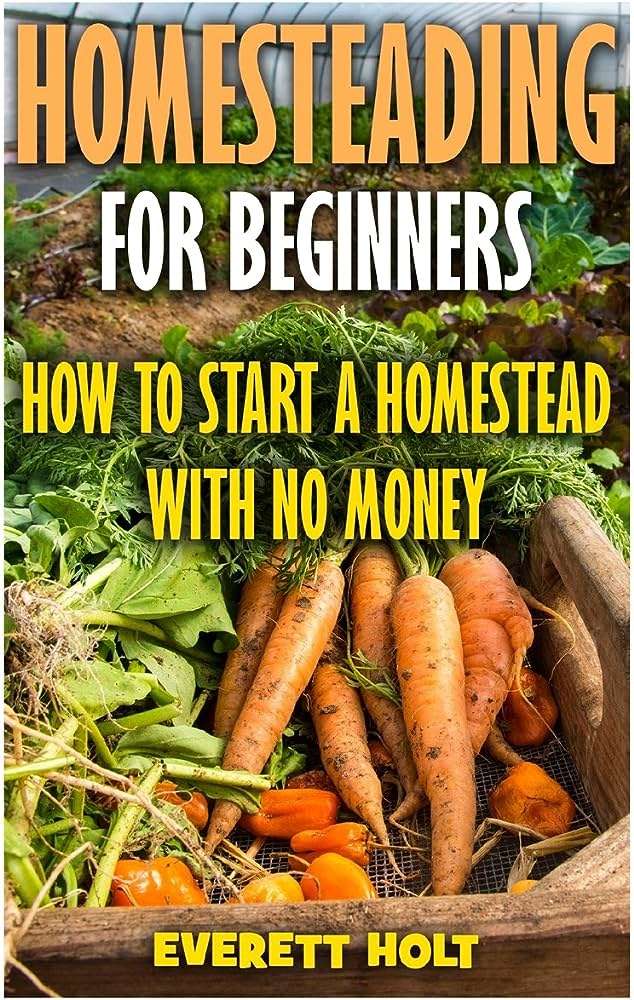
Minimize wasteful spending
Frugal living is a cornerstone of a successful homestead. Minimize wasteful spending by adopting a mindful approach to consumption. Before making a purchase, ask yourself if it’s necessary and if there are more affordable alternatives available. Avoid impulse buying and prioritize your homesteading goals over material possessions.
Grow and preserve your own food
One of the biggest ways to save money on groceries is by growing and preserving your own food. With a well-planned garden and proper preservation techniques, you can significantly reduce your grocery bill. Focus on crops that are suited to your climate and have a long shelf life, such as root vegetables, legumes, and winter squash. Preserve excess produce through canning, freezing, and drying.
Practice thriftiness and DIY
Homesteading requires a mindset of thriftiness and self-sufficiency. Look for opportunities to repurpose, repair, or make do with what you have instead of buying new. For example, repurpose old containers as planters, mend torn clothing, or make your own cleaning products. Developing a DIY mentality will not only save you money but also foster creativity and resourcefulness.
Repair and repurpose instead of buying new
When something breaks or wears out on your homestead, resist the urge to replace it immediately. Instead, try to repair or repurpose the item. For example, if a piece of equipment malfunctions, research how to fix it yourself before considering a replacement. Repurpose materials from old structures or furniture for new projects. By embracing the mindset of repair and repurpose, you can save money and reduce waste.
Learning from Others
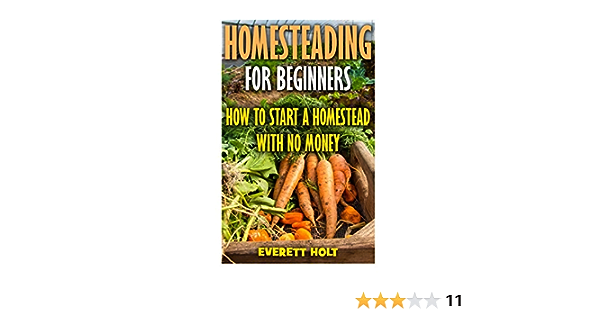
Join local homesteading communities
Connecting with local homesteading communities is a valuable way to learn from others who have more experience. Join local groups, clubs, or organizations that focus on self-sustainable living. Attend events, workshops, and meetings to meet like-minded individuals, exchange knowledge, and gain valuable insights from their experiences.
Attend workshops and conferences
Take advantage of workshops and conferences dedicated to homesteading and sustainable living. These events often bring together experts and experienced homesteaders who share their knowledge and provide hands-on training. Participating in workshops and conferences can give you access to specialized knowledge, new techniques, and the latest innovations in self-sustainable living.
Volunteer on established homesteads
Volunteering on established homesteads is an excellent way to gain firsthand experience and learn from experienced homesteaders. Reach out to local homesteaders and offer to assist them on their land in exchange for learning opportunities. This hands-on experience will not only enhance your skills but also give you a realistic perspective on the challenges and rewards of homesteading.
Connect with experienced homesteaders online
The internet is a vast resource for connecting with experienced homesteaders from around the world. Join online forums, social media groups, and homesteading communities where you can ask questions, seek advice, and learn from others who have already walked the path you’re on. Engage in discussions, share your experiences, and tap into the collective wisdom of the online homesteading community.
Living Off the Grid
Reduce or eliminate utility expenses
One of the significant advantages of living off the grid is reducing or eliminating utility expenses. Invest in energy-efficient appliances and lighting systems to minimize your electricity usage. Install low-flow fixtures and consider rainwater collection systems to reduce your water consumption. By being mindful of your resource usage, you can significantly decrease your utility bills and live more sustainably.
Invest in solar panels and wind turbines
To generate your own electricity, consider investing in renewable energy sources such as solar panels and wind turbines. These investments will require an upfront cost but can provide long-term savings and energy independence. Evaluate your energy needs and explore the available options for harnessing renewable energy on your homestead.
Implement water and energy conservation techniques
Conserving water and energy is essential for living off the grid. Install water-efficient fixtures, such as low-flush toilets and showerheads, and repair any leaks promptly. Be conscious of your energy usage by turning off lights and appliances when not in use. Implementing these conservation techniques will help you maximize your resource efficiency and reduce your ecological footprint.
Practice water harvesting and composting
Water harvesting and composting are essential techniques for self-sustainable living. Collect rainwater for irrigation and other non-potable uses by setting up rain barrels or cisterns. Composting organic waste, such as kitchen scraps and yard trimmings, will not only reduce your need for fertilizers but also enrich your soil. These practices demonstrate the importance of recycling and utilizing resources efficiently.
Recycling and Reusing
Collect and repurpose materials from the community
One way to find materials for your homestead without spending money is by collecting and repurposing materials from the community. Keep an eye out for discarded materials and unwanted items that can be salvaged and used in your projects. Building supplies, furniture, and even appliances can often be found for free or at a significantly reduced price.
Use reclaimed lumber for construction
When constructing buildings or structures on your homestead, consider using reclaimed lumber instead of buying new. Reclaimed lumber is often salvaged from old buildings, pallets, or other sources and can be just as sturdy and functional as new lumber. By using reclaimed materials, you not only save money but also contribute to sustainable resource management.
Repurpose containers for gardening
Gardening containers can be expensive, especially when starting out. Instead of buying new containers, repurpose items such as buckets, barrels, or even old tires for container gardening. Ensure that these containers are properly cleaned and have adequate drainage holes. Not only will this save you money, but it also reduces waste by giving new life to discarded items.
Reuse household items creatively
Instead of discarding household items, get creative and find ways to reuse them on your homestead. For example, use glass jars for food storage or DIY candles, repurpose old bed sheets as drop cloths or fabric scraps for sewing projects, or transform old furniture into functional pieces with a fresh coat of paint. By reusing items creatively, you reduce your environmental impact and save money.
Generating Extra Income
Sell excess crops and produce at local farmers markets
Once your homestead is up and running and producing excess crops, consider selling them at local farmers markets. Farmers markets provide an excellent platform to connect with your community and sell your organic, locally-grown produce. Be sure to grow high-demand crops and consider offering unique or specialty items to attract customers.
Offer homemade crafts or products for sale
In addition to selling crops, consider offering homemade crafts or products for sale. This could include handmade soaps, candles, herbal remedies, or other items that you can create from the resources on your homestead. Tap into your creativity and explore niche markets where your unique products can find a market.
Provide services like carpentry or gardening to neighbors
Leverage your homesteading skills by providing services to your neighbors and community. Offer services such as carpentry, gardening, or landscaping that utilize your DIY skills and knowledge. This not only generates income but also strengthens connections within your community and establishes you as a reliable resource for self-sustainable living.
Consider starting a farm-to-table or CSA program
If you have a larger homestead and are passionate about providing fresh, locally-grown food to your community, consider starting a farm-to-table or Community Supported Agriculture (CSA) program. Farm-to-table programs involve selling directly to restaurants or hosting on-site dining events. CSAs allow individuals to purchase shares of your harvest in advance, providing a steady income stream throughout the growing season.
Starting a homestead with no money is indeed possible, but it requires careful planning, resourcefulness, and a willingness to embrace a more frugal lifestyle. By researching free land opportunities, starting small, developing DIY skills, managing finances wisely, embracing frugal living, learning from others, living off the grid, recycling and reusing materials, and generating extra income through various avenues, you can build a self-sustainable homestead that supports both your financial and lifestyle goals. Remember, the journey to self-sustainability takes time and effort, but with persistence and dedication, you can create a fulfilling and sustainable homesteading lifestyle.



